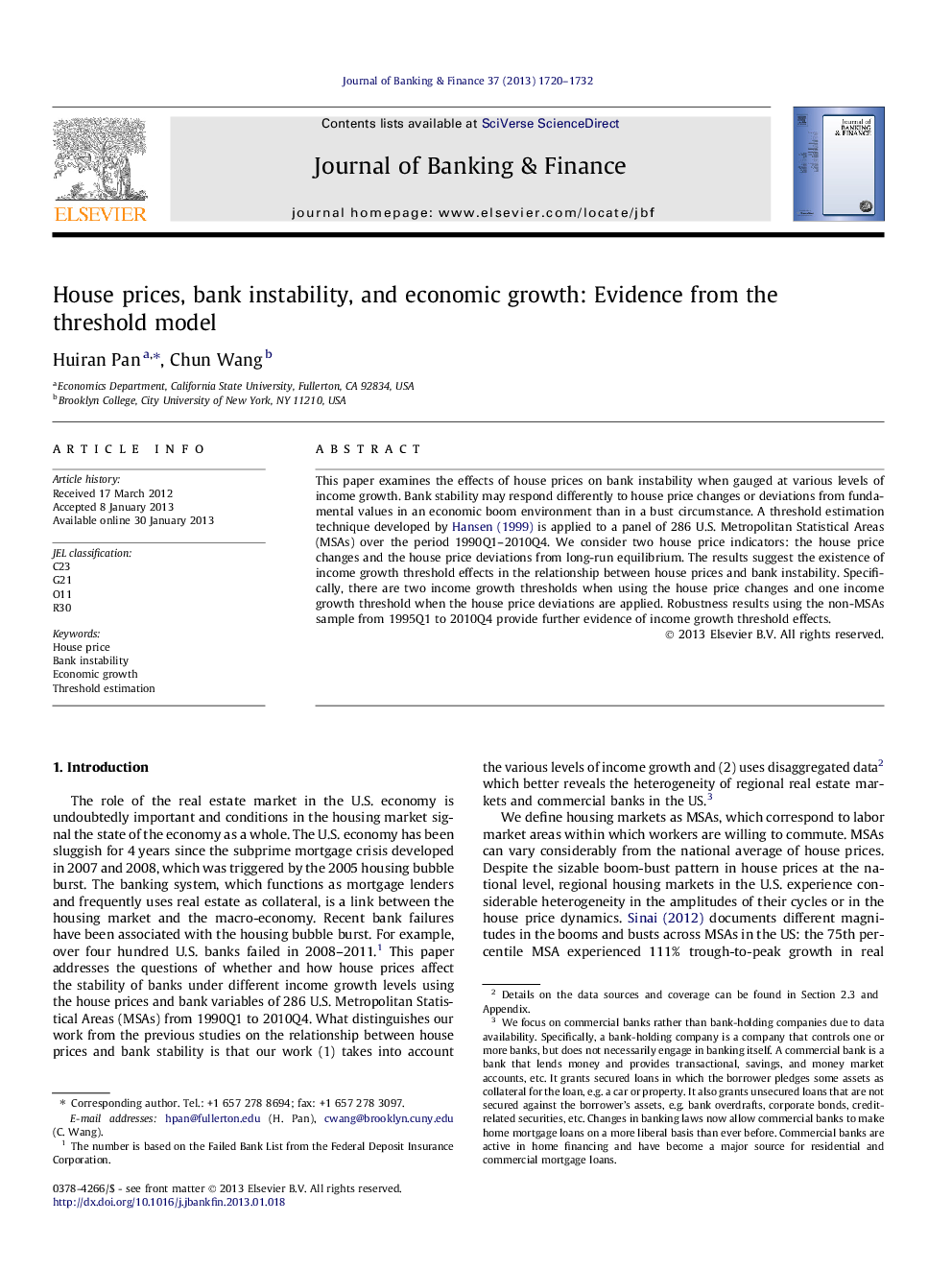| Article ID | Journal | Published Year | Pages | File Type |
|---|---|---|---|---|
| 5089465 | Journal of Banking & Finance | 2013 | 13 Pages |
This paper examines the effects of house prices on bank instability when gauged at various levels of income growth. Bank stability may respond differently to house price changes or deviations from fundamental values in an economic boom environment than in a bust circumstance. A threshold estimation technique developed by Hansen (1999) is applied to a panel of 286 U.S. Metropolitan Statistical Areas (MSAs) over the period 1990Q1-2010Q4. We consider two house price indicators: the house price changes and the house price deviations from long-run equilibrium. The results suggest the existence of income growth threshold effects in the relationship between house prices and bank instability. Specifically, there are two income growth thresholds when using the house price changes and one income growth threshold when the house price deviations are applied. Robustness results using the non-MSAs sample from 1995Q1 to 2010Q4 provide further evidence of income growth threshold effects.
⺠We examine the effects of house price changes or deviations on bank instability. ⺠Disaggregated housing and commercial bank data in 286 U.S. MSAs are applied. ⺠Significant personal income growth thresholds are found. ⺠The larger are the house price changes, the lower the bank instability. ⺠Robustness results using non-MSAs data confirm the income growth threshold effect.
